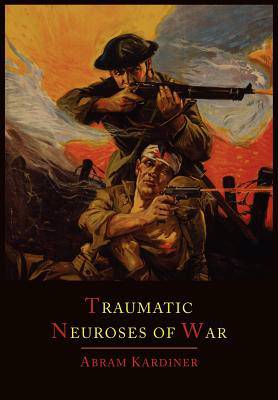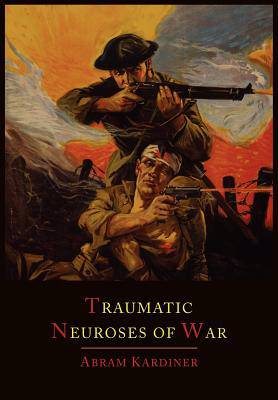
Door een staking bij bpost kan je online bestelling op dit moment iets langer onderweg zijn dan voorzien. Dringend iets nodig? Onze winkels ontvangen jou met open armen!
- Afhalen na 1 uur in een winkel met voorraad
- Gratis thuislevering in België vanaf € 30
- Ruim aanbod met 7 miljoen producten
Door een staking bij bpost kan je online bestelling op dit moment iets langer onderweg zijn dan voorzien. Dringend iets nodig? Onze winkels ontvangen jou met open armen!
- Afhalen na 1 uur in een winkel met voorraad
- Gratis thuislevering in België vanaf € 30
- Ruim aanbod met 7 miljoen producten
Zoeken
Omschrijving
2012 Reprint of 1941 Edition. Exact facsimile of the original edition, not reproduced with Optical Recognition Software. Most PTSD authors agree that Abram Kardiner's "Traumatic Neuroses of War" is the seminal psychological work on PTSD. In this work Kardiner distilled much psychiatric thought on the traumatic syndrome resulting from World War II, with what he had termed "neurosis of war." The symptoms of this syndrome included features such as fixation on the trauma, constriction of personality functioning and atypical dream life. Kardiner provided powerful new insights in these classic texts on the phenomenology, nosology, and treatment of war-related stress, thereby anticipating virtually every aspect of contemporary research on PTSD. Although Kardiner had observed war neuroses since 1925, when he was attending specialist at the U.S. Veterans Hospital, he was only able to theorize them to his satisfaction after he had written "The Individual and His Society," which dealt with the problems of adaptation. He came to see that in the traumatic neurosis of the war the defensive maneuver to ward off the trauma sometimes destroyed the individual's adaptive capacity. Thus, the traumatic neurosis of war was the result of an adaptive failure, not a conflictual illness. So concluding, Kardiner re-introduced the concept of traumatic neurosis into psychoanalytic theory.
Specificaties
Betrokkenen
- Auteur(s):
- Uitgeverij:
Inhoud
- Aantal bladzijden:
- 270
- Taal:
- Engels
Eigenschappen
- Productcode (EAN):
- 9781614273332
- Verschijningsdatum:
- 25/07/2012
- Uitvoering:
- Paperback
- Formaat:
- Trade paperback (VS)
- Afmetingen:
- 170 mm x 244 mm
- Gewicht:
- 435 g

Alleen bij Standaard Boekhandel
+ 60 punten op je klantenkaart van Standaard Boekhandel
Beoordelingen
We publiceren alleen reviews die voldoen aan de voorwaarden voor reviews. Bekijk onze voorwaarden voor reviews.











